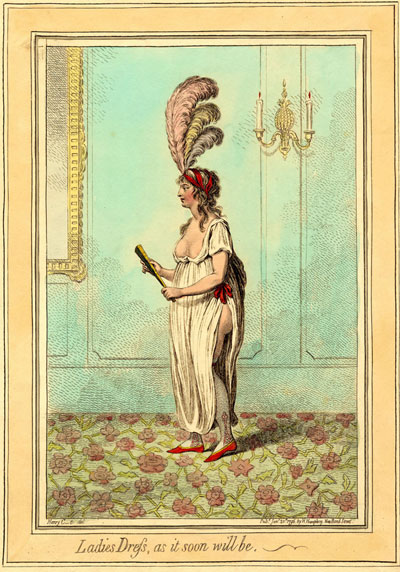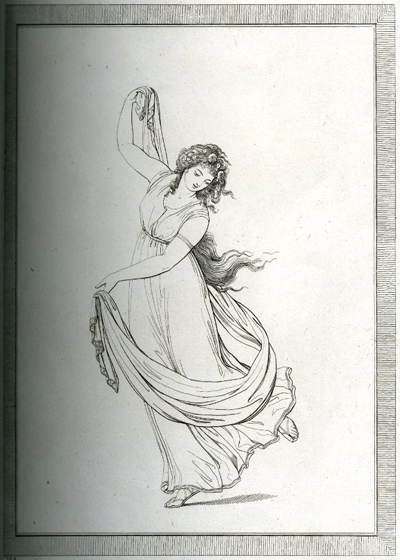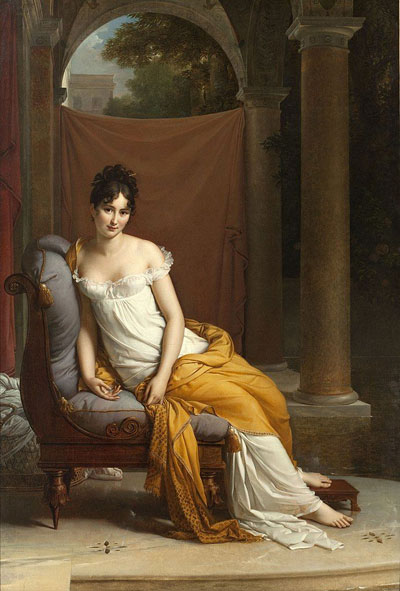Ladies Dress As It Soon Will Be
With his gift for envisioning the worst case example of any tendency, whether political or social, Gillray here portrays what he sees as the logical extension of women's dress (or undress) if it continues to be influenced by Grecian, neo-classical, and French republican ideals. Not surprisingly, the print was included among the "Suppressed Plates" of the 1850 Bohn Edition of Gillray's Works.

© Trustees of the British Museum
As Amelia Rauser and others have argued, in the early 1790s, a confluence of factors both inside and outside of British circles led to a style in which women were made to look like Grecian statues wearing clinging, form-revealing muslin dresses and very little else.
One "source" for this look was the excavations at Pompeii and Herculaneum which uncovcered paintings, sculptures, and vases showing women dressed in thin and flowing robes. Sir William Hamilton was a major collector of these vases, and his wife, Emma Lady Hamilton, obviously modeled her dress on that classical style when performing her famous "Attitudes" for visiting dignitaries as shown below.

Drawings Faithfully copied from Nature at Naples. . . Plate 6 [1794]
© Trustees of the British Museum.
The style was picked up by fashion mavens in France such as Mme Talienne and Juliette Récamier, and its simplicity was itself part of a rebellion against the full and formal style of the ancien regime. If one looks at British Fashion magazines like The Gallery of Fashion (1794-1803), however, one can see that in 1796 Gillray's depiction was a substantial exaggeration of what British ladies were really willing to wear. But it was not far off from the styles flaunted by their French counterparts a few years later.

Portrait de Juliette Récamier, née Bernard (1777-1849)
[1802-1805]
© Library of Congress
Sources and Reading
- Commentary from the British Museum on Ladies Dress As It Soon Will Be.
- "Directoire style fashion of women in 1795-1800 ," HISOUR
- "1790-1799," Fashion History Timeline
- "1775-1795 in Western fashion," Wikipedia
- "Emma, Lady Hamilton," Wikipedia
- "Lady Charlotte Bury," Wikipedia
- The Gallery of Fashion (1794-1803)
- "Thérésa Tallien," Wikipedia
- "Juliette Récamier," Wikipedia
- Amelia Rauser, "Living Statues and Neoclassical Dress in Late Eighteenth-Century Naples" Art History: Wiley Online Library
- Thomas Wright and Joseph Grego, The Works of James Gillray, the Caricaturist; With the History of His Life and Times, p. X.
Comments & Corrections
NOTE: Comments and/or corrections are always appreciated. To make that easier, I have included a form below that you can use. I promise never to share any of the info provided without your express permission.